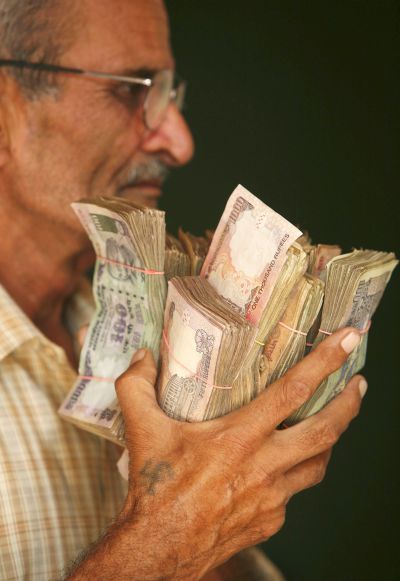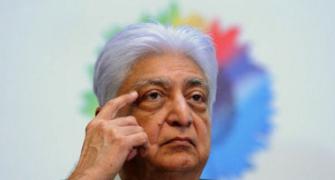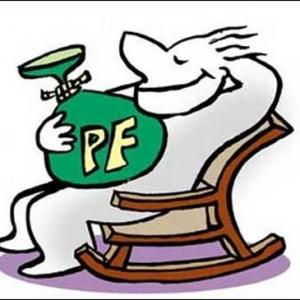 Along with the public investment outlays, what will determine success is how efficiently such investment is implemented, rues Ashok Lahiri
Along with the public investment outlays, what will determine success is how efficiently such investment is implemented, rues Ashok Lahiri
In the run-up to the Union Budget, the secular decline in the investment rate since the onset of the global financial crisis was a major concern.
As a proportion of gross domestic product, gross domestic investment declined by more than 2.5 percentage points between 2007-08 and 2011-12. It fell further from 36.1 per cent in 2011-12 to 32.7 per cent in 2014-15.
The issue was: what can the finance minister do in terms of public investment to stem the decline and augment it?
Finance Minister Arun Jaitley has continued to adhere to his commitment of augmenting public sector capital outlays while ensuring money is well spent, credibility is maintained by sticking to the medium-term fiscal consolidation plan, and incentives are provided for private investment.
In the Budget for 2016-17, Jaitley, for the second consecutive year, maintained capital outlay at more than 20 per cent of such outlays in 2014-15.
The budgeted step-up in 2016-17 in public investment to Rs 2.5 lakh crore (Rs 2.5 trillion), of which Rs 90,200 crore (Rs 902 billion) is for defence, is only four per cent over the Revised Estimate for 2015-16.
This limited increase from 2015-16, however, is a pragmatic recognition of the government’s capacity limitations and the need to spend the money well.
The three areas in which capital outlays have been significantly enhanced are road transport, railways and irrigation. Outlays on roads, including the Pradhan Mantri Gram Sadak Yojana, will be Rs 97,000 crore (Rs 970 billion) during 2016-17.
The Economic Survey observed that the Indian Railways could be the next locomotive of growth.
It said that the present government could do for the railways what the previous National Democratic Alliance government did for roads.
The budgeted capital outlay for the railways has been maintained at Rs 40,000 crore (Rs 400 billion) for the second consecutive year.
Budget 2016-17 has announced the implementation of the Pradhan Mantri Krishi Sinchai Yojana in mission mode to bring 2.85 million hectares under irrigation, fast-tracking the implementation of 89 long-delayed irrigation projects under the Accelerated Irrigation Benefits Programme, and setting up of a dedicated long-term irrigation fund in Nabard with an initial corpus of about Rs 20,000 crore (Rs 200 billion).
Jaitley continues to be upbeat about the National Investment and Infrastructure Fund proposed in last year’s Budget.
Described by some as a financially savvy “masterstroke”, the NIIF received the Securities and Exchange Board of India’s approval as category II alternative investment fund in December 2015, and is operational.
Hopefully, investments from the NIIF will start to flow in during 2016-17.
He has allocated Rs 4,000 crore (Rs 40 billion) for NIIF in the Budget for 2016-17.
The problem of stressed assets in public sector banks has been a major source of worry for some time.
In 2015-16, almost six months after the presentation of the Budget, the government launched the Indradhanush programme, which included addressing the non-performing asset problem of PSBs by injecting more than Rs 20,000 crore of capital.
The capital outlay for the resolution of the stressed assets problem has been pegged at Rs 25,000 crore (Rs 250 billion) again in 2016-17 Budget.
From the third quarter of 2014, India’s growth has consistently surpassed China’s, and India is the fastest-growing emerging economy.
However, for the 35 years between 1979 and 2013, China grew at an average annual rate of 9.8 per cent.
It may be rightfully resting after running a marathon.
India is only on the starting block.
Public investment can indeed play an important role.
But it is equally important to spend the money well and to remember that public sector gross fixed capital formation is less than a quarter of the total GFCF.
Together with the public investment outlays, what will determine success is how efficiently such investment is implemented and how, together with reforms such as incentivising gas discovery and exploration, and a legal framework for dispute resolution in public-private partnership projects, they crowd in private investment.
Image: A man holds currency notes near a cash counter after withdrawing them inside a bank. Photograph: Mukesh Gupta/Reuters
The image is used for representational purpose only
Ashok Lahiri is former chief economic advisor to the finance ministry










